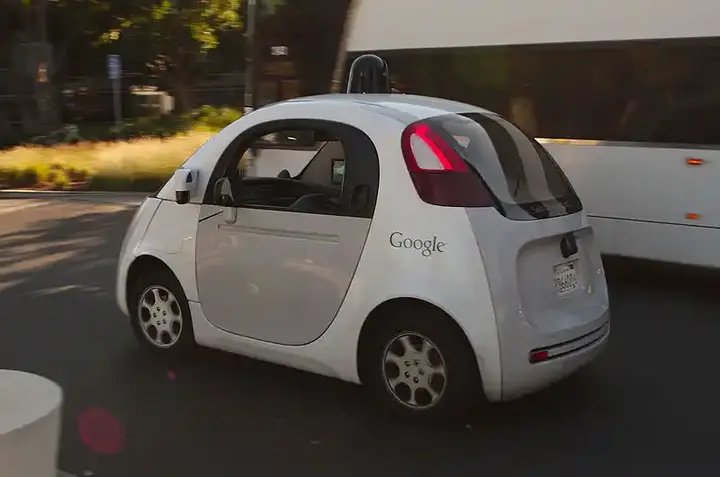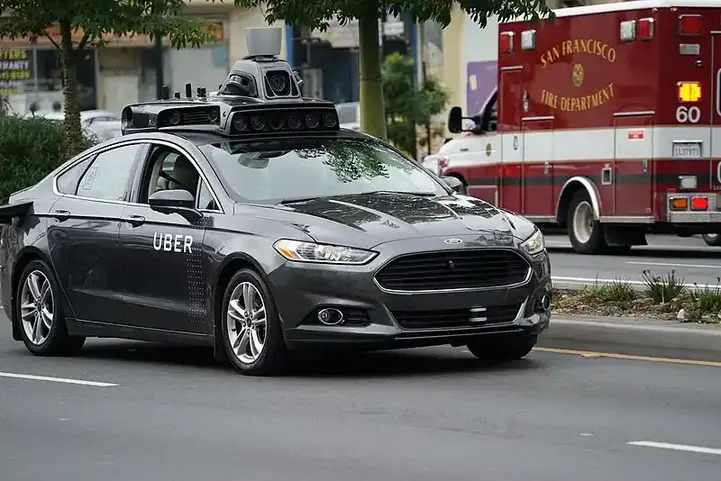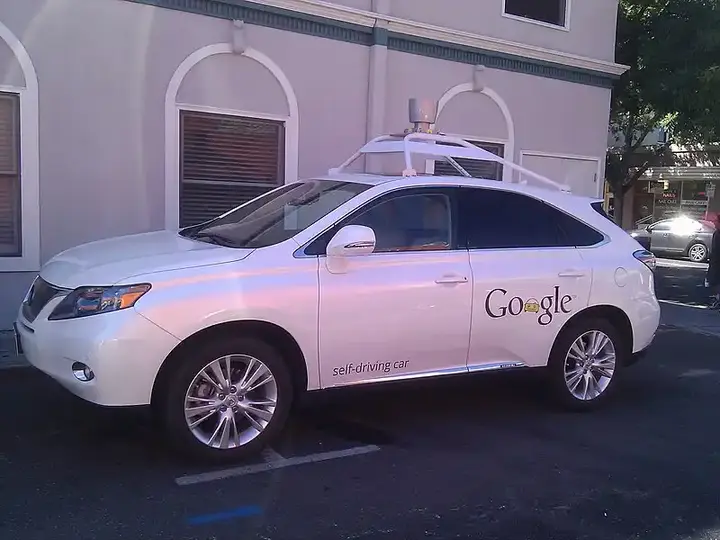Self-driving cars - a dream or a reality to be realized?

We've seen her in science fiction movies many times, not alone; she had planes with her too!
But today, especially with the development of artificial intelligence and the acceleration of innovation, we see the dream come true.
Self-driving cars, or autonomous vehicles (AVs), are vehicles capable of mobility without human intervention. It relies on a combination of sensors and software to navigate safely and effectively in the surrounding environment.
Self-driving cars have many potential advantages, including:
• Safety: It can help reduce or eliminate car accidents, and there is nothing wrong with the number of accidents in the world in this regard.
• Comfort: It can make transportation more comfortable, as passengers can relax, work or have fun while driving the car.
Recommend
• Productivity: It can increase productivity, as people can use commuting time to work, study or practice other activities.
• Efficiency: It can reduce traffic congestion and carbon emissions, as self-driving cars can navigate more efficiently than human drivers.
How do self-driving cars work?

Self-driving cars use a variety of sensors to collect information about their surroundings, including:
• Cameras to take photos and videos of the road, other cars and pedestrians.
• Radar to locate objects and distance them from the car.
• Lidar system to create three-dimensional maps of the surrounding environment. It is an advanced optical system that works by means of special sensors.
• Ultrasonic sensors to detect nearby objects.
This data is then collected and fed into a computer system equipped with artificial intelligence (AI) algorithms that can process it and make decisions about how to navigate. These decisions include things like:
• Acceleration: Vehicle speed control.
• Steering: Control the direction of the vehicle.
• Braking: Stop or slow down.
The most famous self-driving car experiences

The field of self-driving cars has witnessed many important experiments over the years, which contributed to the development of this technology and the improvement of its capabilities. Here are some of the most popular self-driving car experiences:
1. Google's Waymo Project
The Waymo project is one of the first and most popular programs related to self-driving cars. Google began testing its self-driving cars in 2009, and these cars have traveled more than 20 million miles on the streets of various American cities. In 2018, Waymo launched a self-driving taxi service in Phoenix, Arizona, becoming the first commercial service of its kind in the world.
2. GM Cruise Project
GM acquired Cruise Automation in 2016 and continued to develop its technology for self-driving cars. Cruise conducts extensive testing of its vehicles in San Francisco, where it focuses on improving its capabilities in dealing with complex urban environments.
3. Uber Self-Driving Cars
Uber began testing its self-driving cars in 2016, and the company has faced some challenges along the way, including a fatal accident in 2018. Despite this, Uber continues to develop its technologies, and aims to launch a self-driving taxi service in the near future.
4. Drive.ai
Founded in 2016, Drive.ai is one of the leading self-driving car developers in China. Drive.ai conducts extensive testing of its cars in various Chinese cities, such as Beijing and Shanghai, and seeks to provide intelligent transportation services in Chinese cities.
5. nuTonomy
Founded in 2013, nuTonomy is a Singapore-based startup focused on developing autonomous driving technologies for electric vehicles. nuTonomy conducts extensive testing of its vehicles in Singapore and is one of the leading self-driving car developers in Southeast Asia.
What are the challenges?

There are still many challenges to overcome before self-driving cars become a reality, including:
Technology: Autonomous driving technology is still under development, and more research and testing is needed before self-driving cars become completely safe and reliable.
Regulations: There are currently no clear regulations governing the operation of self-driving cars, which could create legal uncertainty and liability.
General acceptance: Some people may not be comfortable riding self-driving cars, and more education and awareness may be needed to build confidence in this technology.
What is the future of self-driving cars?

Despite the challenges, many believe that self-driving cars have the potential to radically change the transportation industry. Investment in the development of this technology is made by automakers, technology companies, and governments around the world. We are likely to see self-driving cars on the roads within the next few years, with the potential to become more common in the coming decades.
![]()
Why are there 24 hours a day and 60 minutes an hour?
Ever wondered why clocks have 12 hours? It traces back to ancient Egyptians and Babylonians who used finger joints to count and stars to track time. Their clever systems shaped the 24-hour day and 60-minute hour we still use today. Time, it turns out, is a gift from history! more- ADVERTISEMENT
![]()
Tafilalet Village: Exploring Morocco's Berber Life
Tafilalet, a hidden gem in Morocco, blends ancient Amazigh heritage with stunning desert landscapes. Visitors can explore traditional mud architecture, experience authentic Berber hospitality, and enjoy local cuisine like tagine and dates. It's a perfect escape for those seeking adventure, culture, and a taste of simple, traditional life. more- ADVERTISEMENT
![]()
7 simple tips to improve daily concentration
7 Simple Tips to Improve Daily Focus more- ADVERTISEMENT
![]()
How periods of consistency guided me to the goal: your actions are your compass
How Periods of Consistency Guided Me To Purpose- Your actions are your compass more- ADVERTISEMENT
![]()
The epic story of the Valley of the Kings in Luxor
Hidden under Egypt's desert sands, the Valley of the Kings holds grand tombs built to protect pharaohs like Tutankhamun and Seti I. Rich in secrets and treasure, it offers a journey into ancient history, where engineering genius met sacred beliefs in the afterlife. A mesmerizing destination for any explorer. more- ADVERTISEMENT
![]()
The mysterious abandonment of Cahokia: The Lost City of Ancient America
Once a bustling hub near the Mississippi River, Cahokia was North America's largest pre-Columbian city, known for its massive Monks Mound and smart urban planning. By the 14th century, it was mysteriously abandoned, leaving behind ruins that still intrigue archaeologists and visitors today. more- ADVERTISEMENT
![]()
Success Guide - How to leave any bad habit?
Getting rid of bad habits takes time, effort, and patience. Focus on one habit at a time, understand your triggers, and replace the habit with a positive alternative. Stay realistic, reward progress, and don’t be discouraged by setbacks—just get back on track and keep going. more- ADVERTISEMENT
![]()
Discover the Impossible: Turning Deserts into Dense Forests – Dream or Reality?
Desert greening is turning deserts into lush forests using smart water techniques, solar and wind farms, and fertile soil solutions like pyrogenic carbon. Projects like the Sahara Forest Project aim to fight drought, boost agriculture, and even combat climate change, turning drylands into thriving ecosystems. more- ADVERTISEMENT
![]()
Steve Jobs: Courage is what separates actors and dreamers
Steve Jobs: Courage is what separates actors and dreamers more- ADVERTISEMENT
![]()
The moon is moving away from the earth. Will our day become 25 hours?
The Moon is slowly drifting away from Earth, making our days longer over time. This cosmic dance, caused by tidal forces, began with a massive ancient collision and continues to shape Earth's rotation and life. Fossil records even show that days were once just 21.8 hours long. more- ADVERTISEMENT





















